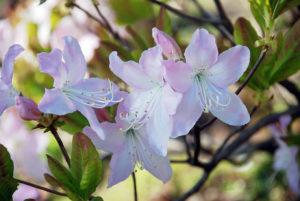Planting and caring for magnolia in the open field, breeding methods
Magnolia is considered one of the most ancient flowering plants, which is about 95 million years old. But even now the plant has not lost its popularity. A large number of different varieties have been bred by breeders. Planting and caring for magnolia in the open field is not the most difficult task, despite the fact that the plant is whimsical.
Content
- 1 Magnolia features
- 2 Varieties and types of plants
- 2.1 Magnolia sieboldii
- 2.2 Magnolia obovate (Magnolia obovata), or white magnolia
- 2.3 Magnolia officinalis (Magnolia officinalis)
- 2.4 Magnolia pointed (Magnolia acuminata), or cucumber magnolia
- 2.5 Magnolia stellata
- 2.6 Magnolia liliflora (Magnolia liliflora)
- 2.7 Magnolia kobus
- 2.8 Magnolia grandiflora (Magnolia grandiflora)
- 2.9 Magnolia Sulange (Magnolia x soulangeana)
- 3 The specifics of growing crops
- 4 The nuances of caring for magnolia in the garden
- 5 Diseases and pests
- 6 Breeding culture
- 7 Magnolia in landscape design
Magnolia features
Magnolia is a shrub plant or tree. According to some reports, this culture even outlived the dinosaurs. Plant height can vary. The culture has beautiful large inflorescences of various shades. The most common varieties are white and pink. The size of the inflorescences also depends on the variety. The culture belongs to the thermophilic, therefore it is grown mainly in the south.
Varieties and types of plants
There are a large number of tree varieties that differ in appearance and inflorescences. You can also find hybrids that are suitable for growing in temperate climates.
Magnolia sieboldii
The variety belongs to trees, it grows up to 8 m in height. The crown is spreading, about 7.5 m in diameter. The inflorescence is cupped at the beginning of flowering, gradually blooms and takes the shape of a saucer. There are 6-8 petals per inflorescence. Flowering earlier, begins in May and ends in late June. In some cases, the tree may re-bloom in August. The Siebold variety is considered the most winter hardy of all varieties. The tree can survive frosts down to -35 degrees.
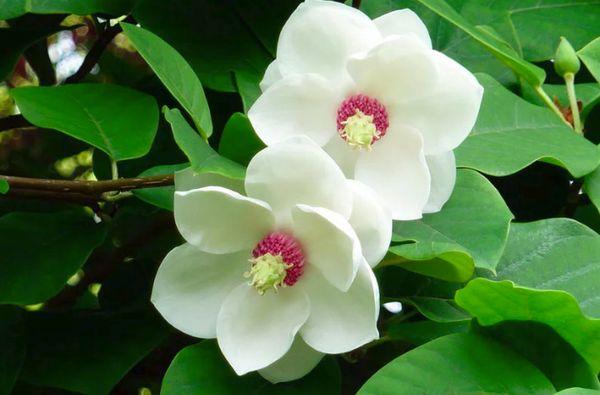
Magnolia obovate (Magnolia obovata), or white magnolia
The tree is not the tallest, when compared with other plant varieties, it reaches 3-4 m in height. It has a dense and spreading crown. The variety has beautiful creamy white inflorescences. The flowers are large, about 20 cm in diameter. The flowering period occurs in the first two summer months. Differs in drought and light frost resistance.The growth of the tree is slow, the plant finally forms only in the second year after planting.
Magnolia officinalis (Magnolia officinalis)
A tall species, the height can exceed 15 m. The maximum height is 20 m. It enters the flowering period early, already in April, immediately after the appearance of leaves. The flowers are cup-shaped, with a rich aroma, white. 15-20 cm in diameter. The leaves are large in size, up to 50 cm long, 25 cm wide. Flowers open in the morning and remain so until the evening. They close by nightfall. Also, the inflorescences close when it's hot outside. The flowering period lasts from May to June.
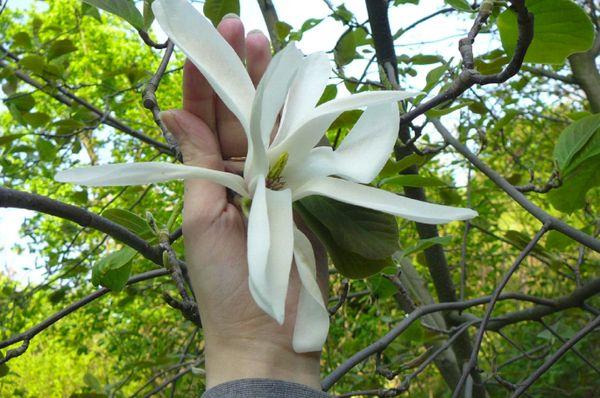
Magnolia pointed (Magnolia acuminata), or cucumber magnolia
The tree of this variety grows up to 8 m high. The variety belongs to frost-resistant and is able to withstand frosts down to -34 degrees... The petals of flowers are light yellow, bloom after the leaves on the tree completely bloom. Suitable for growing in the Moscow region.
Magnolia stellata
It belongs to tall shrubs, up to 3 m high. A significant drawback of this variety is slow growth. For a year, the shrub grows only 15 cm. Flowers begin to bloom in April before the leaves appear. The flowering period lasts about a month.
Magnolia liliflora (Magnolia liliflora)
The shrub grows up to 3 m in height, in some cases it can be up to 5 m. The foliage has a rich green hue. The crown is wide, spreading. The flowers are small, 3-4 cm in diameter. The shade is red-crimson without aroma.
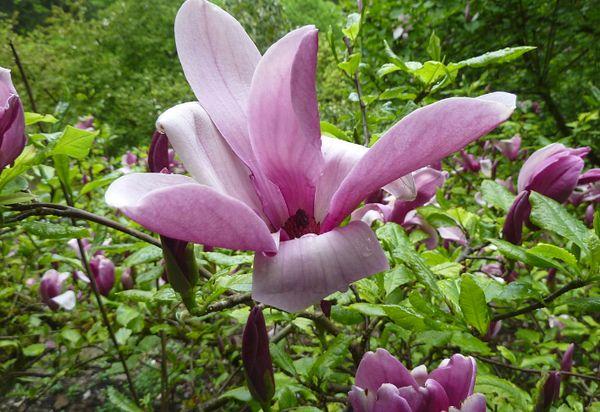
Magnolia kobus
The Kobus variety is characterized by a snow-white inflorescence with a pleasant smell. There are 6 petals in the inflorescence, at the base on the back of the petals are purple. The tree grows up to 10 m. In an adult, the tree has a spherical crown. If you provide a good shelter for the onset of the winter period and favorable growing conditions, then the Kobus variety can be cultivated even in the central regions. A relatively hardy plant.
Magnolia grandiflora (Magnolia grandiflora)
The variety consists of trees up to 7 m high. The foliage is large, rich emerald color, glossy. The flowers are white, up to 15 cm in diameter. By nightfall, the inflorescences close. Flowering begins in May and ends in early October.
Magnolia Sulange (Magnolia x soulangeana)
The Soulange variety is distinguished by its long flowering, which lasts almost a month. New flowers appear immediately after the old ones fade. The variety belongs to treelike shrubs, with a height of 2 to 10 m. Suitable for growing only in the southern regions. The foliage is large in size, rich in light green color. Dusty pink inflorescences. There are also varieties with red and white flowers.
The specifics of growing crops
Magnolia is a rather whimsical culture, and if you do not pay enough attention to the choice of a site where the shrub will grow, and the composition of the soil, it will be problematic to grow a plant.
Choosing a landing site
The plant prefers to grow in open, sunny areas. It is not recommended to plant seedlings in the shade, they grow poorly in such a place and their flowering is not so abundant.
Selection and preparation of planting material
Before planting bushes in the ground, you need to choose them correctly. There should be no signs of damage on the branches. They must be whole and firm. Rhizome well developed, without dry roots.
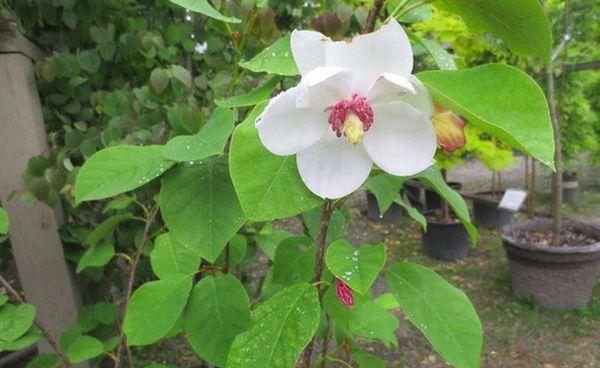
How to plant
The plant grows very slowly, so you need to be prepared for the fact that even if you regularly feed the bush, this will not have a strong effect on growth.
How to plant a seedling:
- Dig a hole 1 m deep.
- Fill the drainage at the bottom.
- Place the seedling in the ground and spread the roots.
- Cover with soil and tamp near the trunk.
At the end of planting, pour abundantly with warm water with the addition of mineral fertilizers.
The nuances of caring for magnolia in the garden
Compliance with the care recommendations is necessary in order for the flowering to be abundant and long-lasting.
What should be the soil?
The crop prefers to grow on light and fertile soils with good drainage. A substrate with neutral or weak acidity should be chosen.
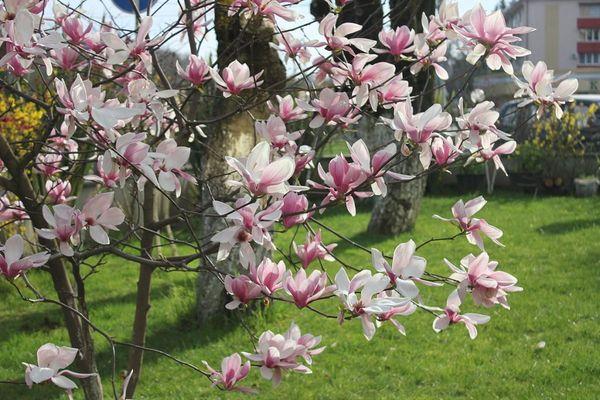
Watering mode
Magnolia belongs to moisture-loving plants, so the irrigation regime must be observed. The soil must be constantly moistened, it is important not to allow the soil to dry out. Heated water is used for irrigation. Watering must be abundant. To maintain the moisture content of the substrate and at the same time insulate the root system, you need to mulch the soil.
Plant feeding
Top dressing should be applied to the soil no later than June. The shrub belongs to early flowering plants, therefore, fertilizing is applied as early as possible. This will be a good preparation for the beginning of the flowering period.
First of all, the shrub is fed with complex mineral fertilizers. The last feeding is done in July. In August, the plant prepares for winter, and therefore does not require nutrients.
The shrub also responds well to organic fertilizers. Especially if you water the bush with chicken droppings diluted in water. Another way of feeding is to sprinkle the soil near the trunk with wood ash and then watered with plenty of warm water.
Transfer
The shrub is one of those rare plant species that prefer to grow all their life in the same place where the young seedling was originally planted. But if there is such a need that you cannot do without a transplant, you need to carry it out so that the plant experiences as little stress as possible.
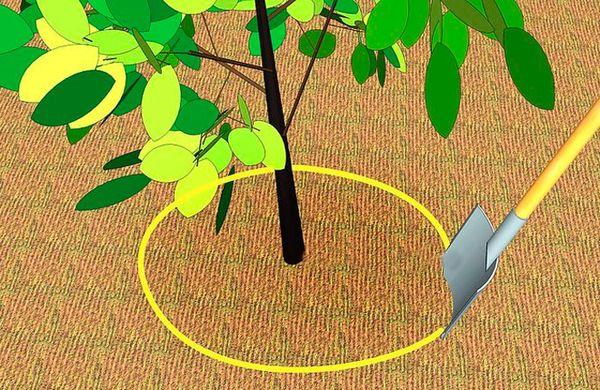
Before digging up the bush, the soil around it is watered abundantly. Dig out a bush along with a large clod of earth. The main thing is that the soil does not crumble while the bush is being moved to a new place. For example, you can cover the rhizome with soil with polyethylene and move the shrub in it. Dig a deep hole so that the lump fits freely. Fill the drainage at the bottom of the pit. Plant a bush and water abundantly. It is best to add complex mineral fertilizers to the water.
Pruning
The culture treats pruning of branches badly. It is undesirable to prune plants without a strong need. The procedure is carried out only if there are diseased and dry branches on it.
Shelter for the winter
Before the onset of cold weather, magnolia must be prepared for winter. The culture belongs to the thermophilic and is grown mainly in warm regions, therefore, winters in the central part and the Volga region may not survive.
In order to protect the tree from frost, in the fall, the lower part of the trunk is wrapped in two layers of burlap. The main thing is to do it carefully. The stems of the plant are fragile and easily damaged. Also, such a measure will protect the bark from rodents. If you do not cover the shrub for the winter, it is likely that it will die.
Diseases and pests
The shrub is rarely sick and is affected by insects. One of the problems that you have to face is yellowing of the foliage. Most likely, there is not enough iron in the soil. If yellow spots appear on the leaves, this indicates that the soil is oversaturated with lime.
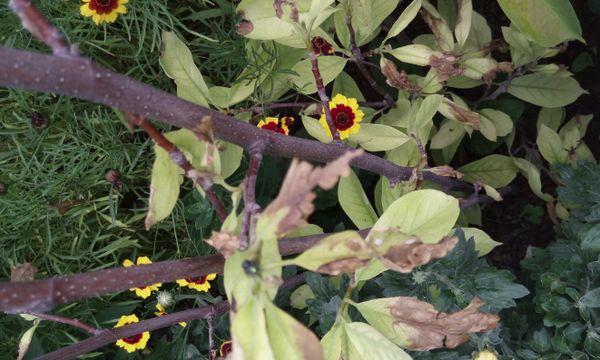
A spider mite may appear among insects on a tree. You can get rid of it with the help of chemicals. Another problem is damage to the bark by rodents. In winter, traps can be placed next to the tree. Cover the lower part of the trunk in two layers with sacking. Wounds from mice are treated with Fundazol.
Breeding culture
There are three ways to breed magnolias. This is a seed method, cuttings and propagation of bushes by layering.
Seed propagation
One way to grow magnolia is by seed.The seeds of the plant are large and covered with a thick shell, therefore, before planting, the shell is pierced or wiped with sandpaper. This process is called scarification. After that, the seeds are washed in a mild soapy solution and then rinsed with clean water.
A substrate for flower crops is suitable for planting seeds. Planting material is sown to a depth of 3 cm. Then it is removed to the basement until spring. After the end of winter, the boxes are taken out of the basement and placed on the windowsill. The soil is watered regularly to keep it constantly moist.

Magnolia seedlings grow very slowly. In the first year after the emergence of shoots, the bushes grow only 30-50 cm. Only after a year will they reach such sizes that will allow them to be transplanted to the street. Seed propagation of magnolias guarantees success if the ideal conditions for crop growth are created. It is best to plant freshly harvested seeds.
Cuttings
The most favorable time to propagate the shrub by cuttings is the end of June. Cuttings are cut only from young plants. Several pairs of leaves are left on them (above), and the lower part is treated with growth stimulants for plants. Next, the cuttings are planted in wet sand or peat mixed with sand.
The substrate must be constantly moist. The cuttings are covered and placed in a room at a temperature of +18 to +21 degrees. Rooting of cuttings begins 7-8 weeks after planting. Cuttings are planted in open ground only after a year.
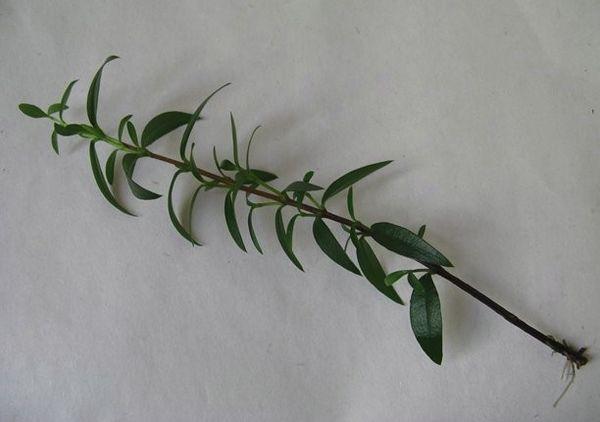
How to propagate by layering
Another way to reproduce shrubs is layering. This method is the easiest of all. All varieties can reproduce in this way. It is best to use this method when the plant is still very young. Then you will be able to get seedlings much faster.
In spring, the lower stems of the plant are bent to the soil and covered with earth. Better to fix the stem with something. Pinch the top. After 2-3 years, a powerful root system will form, and the cuttings can be cut off from the mother plant and planted in a new place.
Magnolia in landscape design
Magnolia is often used in landscape design and decoration of summer cottages. Shrub varieties are often used as hedges. Magnolia is especially popular in seaside resorts because of the most suitable climate for the plant.
